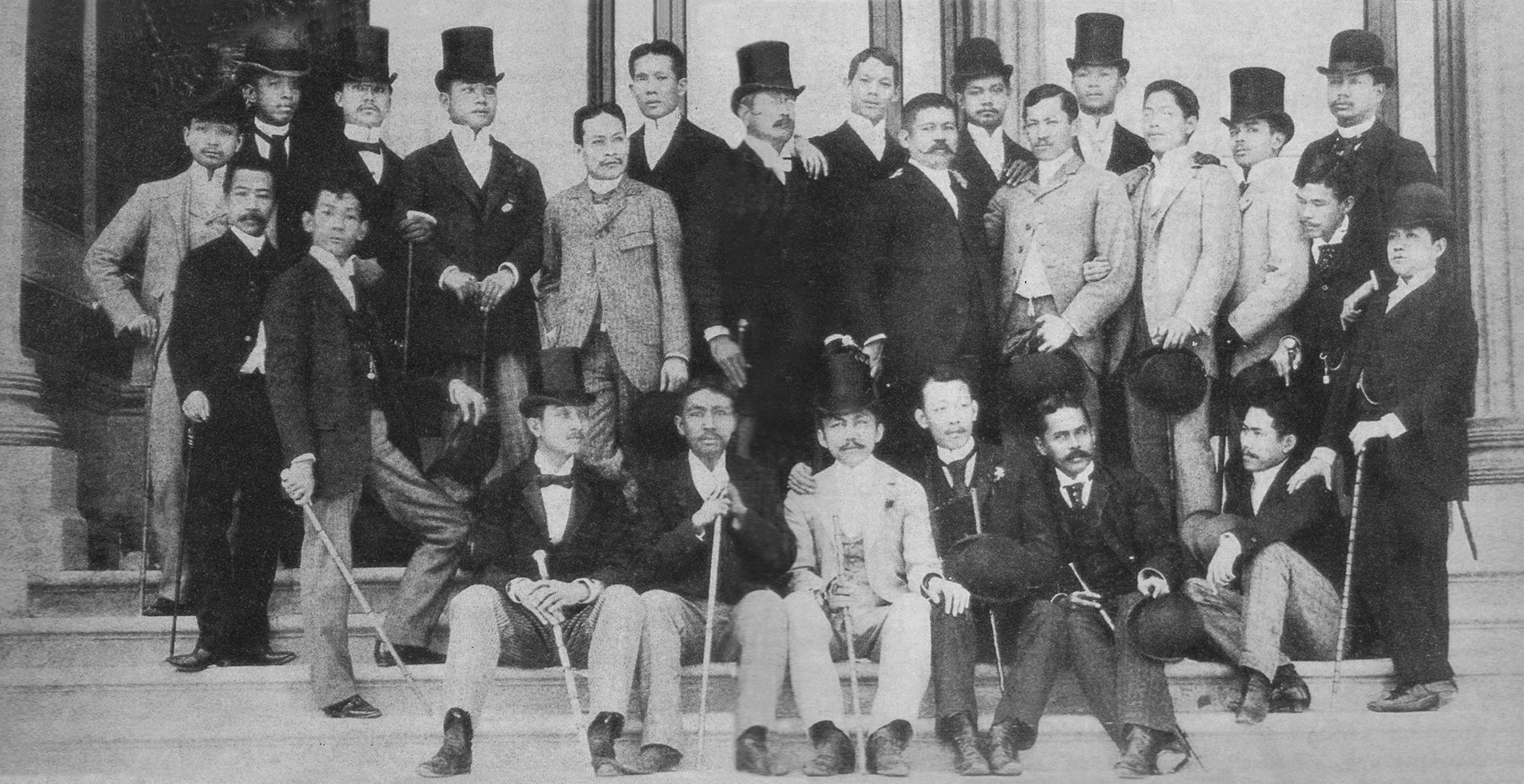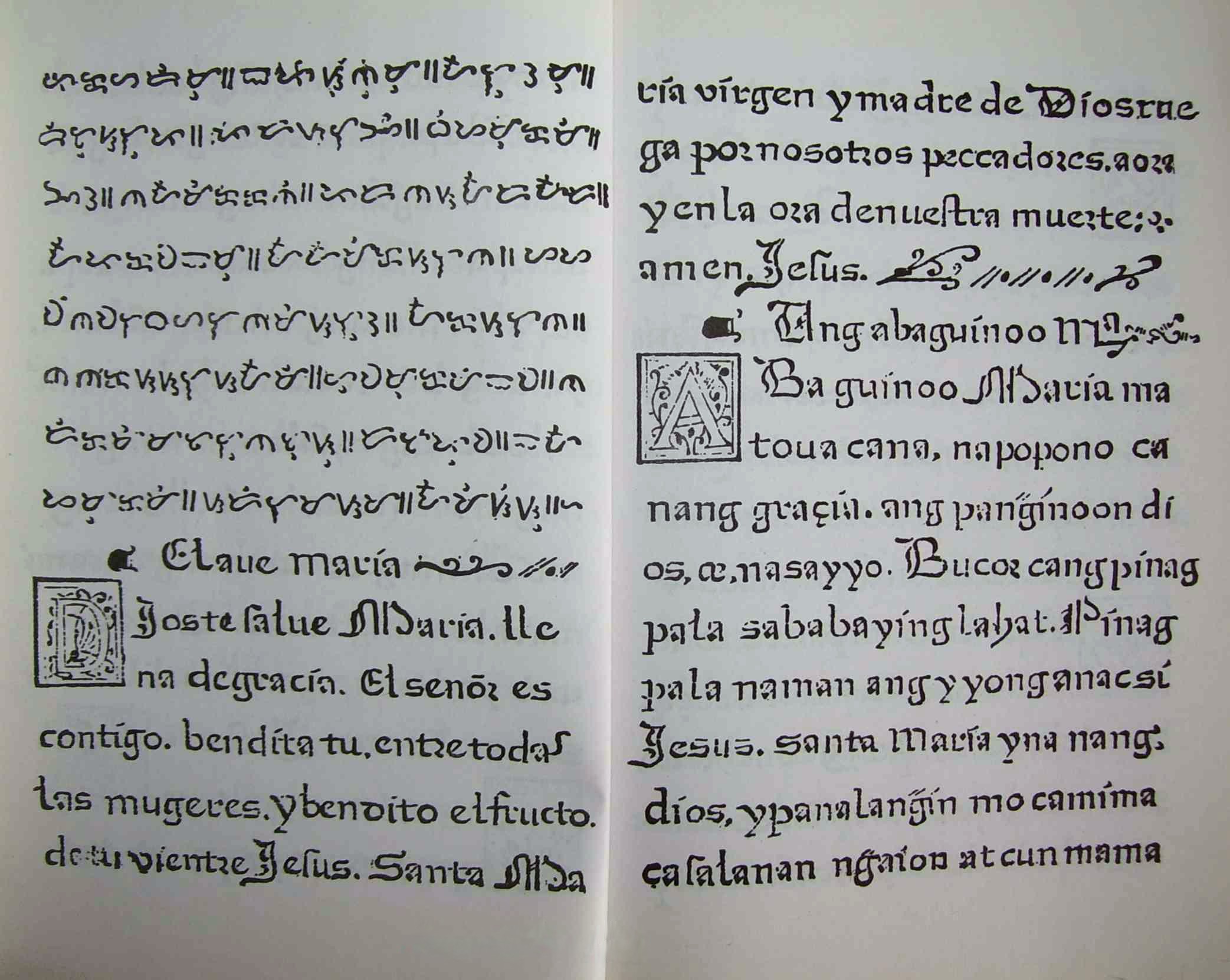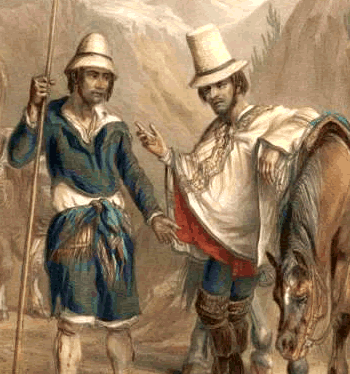|
Ilustrado
The Ilustrados (, "erudite", "learned" or "enlightened ones") constituted the Filipino intelligentsia ( educated class) during the Spanish colonial period in the late 19th century. Elsewhere in New Spain (of which the Philippines were part), the term '' gente de razón'' carried a similar meaning. They were late Spanish-colonial-era middle to upper class Filipinos, many of whom were educated in Spain and exposed to Spanish liberal and European nationalist ideals. The ''ilustrado'' class was composed of Philippine-born and/or raised intellectuals and cut across ethnolinguistic and racial lines—'' mestizos'' ''(''both '' de Sangleyes and de Español), insulares, and indios'', among others—and sought reform through "a more equitable arrangement of both political and economic power" under Spanish tutelage. Stanley Karnow, in his '' In Our Image: America's Empire in the Philippines'', referred to the ''ilustrados'' as the "rich Intelligentsia" because many we ... [...More Info...] [...Related Items...] OR: [Wikipedia] [Google] [Baidu] |
Ilustrados 1890
The Ilustrados (, "erudite", "learned" or "enlightened ones") constituted the Filipino people, Filipino intelligentsia (Education in the Philippines, educated class) during the History of the Philippines (1521–1898), Spanish colonial period in the late 19th century. Elsewhere in New Spain (of which the Philippines were part), the term ''gente de razón'' carried a similar meaning. They were late History of the Philippines (1565–1898), Spanish-colonial-era middle class, middle to upper class Filipinos, many of whom were educated in Spanish language in the Philippines, Spain and exposed to Spanish liberalism, Spanish liberal and European nationalist ideals. The ''ilustrado'' class was composed of Spanish East Indies, Philippine-born and/or raised intellectuals and cut across ethnolinguistic and racial lines—''Filipino mestizos, mestizos'' ''(''both ''Sangley, de Sangleyes and Spanish Filipino, de Español), Spanish Filipino, insulares, and ethnic groups in the Philippine ... [...More Info...] [...Related Items...] OR: [Wikipedia] [Google] [Baidu] |
Filipino People
Filipinos () are citizens or people identified with the country of the Philippines. Filipinos come from various Austronesian peoples, all typically speaking Filipino language, Filipino, Philippine English, English, or other Philippine languages. Despite formerly being subject to Spanish Philippines, Spanish administration, less than 1% of Filipinos are fluent in Spanish language, Spanish. Currently, there are more than 185 Ethnic groups in the Philippines, ethnolinguistic groups in the Philippines each with its own Languages of the Philippines, language, identity, culture, tradition, and history. Names The name ''Filipino'', as a demonym, was derived from the term , the name given to the archipelago in 1543 by the Spaniards, Spanish explorer and Order of Preachers, Dominican priest Ruy López de Villalobos, in honor of Philip II of Spain. During the History of the Philippines (1521–1898), Spanish period, natives of the Philippine islands were usually known in the ... [...More Info...] [...Related Items...] OR: [Wikipedia] [Google] [Baidu] |
Spanish Language In The Philippines
Spanish was the sole official language of the Philippines throughout its more than three centuries of Spanish rule, from the late 16th century to 1898, then a co-official language (with English) under its American rule, a status it retained (now alongside Filipino and English) after independence in 1946. Its status was initially removed in 1973 by a constitutional change, but after a few months it was once again designated an official language by a presidential decree. However, with the adoption of the present Constitution, in 1987, Spanish became designated as an auxiliary or "optional and voluntary language". During the period of Spanish viceroyalty (1565–1898), it was the language of government, trade, education, and the arts. With the establishment of a free public education system set up by the viceroyalty government in the mid-19th century, a class of native Spanish-speaking intellectuals called the ''Ilustrados'' was formed, which included historical figures s ... [...More Info...] [...Related Items...] OR: [Wikipedia] [Google] [Baidu] |
José Rizal
José Protasio Rizal Mercado y Alonso Realonda (, ; June 19, 1861 – December 30, 1896) was a Filipino nationalist, writer and polymath active at the end of the Spanish colonial period of the Philippines. He is popularly considered a national hero (''pambansang bayani'') of the Philippines. An ophthalmologist by profession, Rizal became a writer and a key member of the Filipino Propaganda Movement, which advocated political reforms for the colony under Spain. He was executed by the Spanish colonial government for the crime of rebellion after the Philippine Revolution broke out; the revolution was inspired by his writings. Though he was not actively involved in its planning or conduct, he ultimately approved of its goals, which eventually resulted in Philippine independence. Rizal is widely considered one of the greatest and most influential figures in the Philippines, and has been recommended to be so honored by an officially empaneled National Heroes Committee. Ho ... [...More Info...] [...Related Items...] OR: [Wikipedia] [Google] [Baidu] |
History Of The Philippines (1521–1898)
The history of the Philippines dates from the earliest Hominini, hominin activity in the archipelago at least by 709,000 years ago. ''Homo luzonensis'', a species of archaic humans, was present on the island of Luzon at least by 134,000 years ago. The earliest known anatomically modern human was from Tabon Caves in Palawan dating about 47,000 years. Negrito groups were the first inhabitants to settle in the prehistoric Philippines. These were followed by Austroasiatic language, Austroasiatics, Indigenous people of New Guinea, Papuans, and South Asians. By around 3000 BCE, seafaring Austronesians, who form the majority of the current population, migrated southward from Taiwan. By 2000 BCE the archipelago was the crux of a trans-oceanic Philippine jade culture. Scholars generally believe that these ethnic and social groups eventually developed into various settlements or polities with varying degrees of economic specialization, social stratification, and social organization, pol ... [...More Info...] [...Related Items...] OR: [Wikipedia] [Google] [Baidu] |
Graciano López Jaena
Graciano López y Jaena (December 18, 1856 – January 20, 1896), commonly known as Graciano López Jaena (), was a Filipino journalist, orator, reformist, and national hero who is well known for his newspaper, '' La Solidaridad'' (December 13,1888. Philippine historians regard López Jaena, along with Marcelo H. del Pilar and José Rizal, as the triumvirate of Filipino propagandists. Of these three ''ilustrados'', López Jaena was the first to arrive in Spain and may have begun the Propaganda Movement, which advocated the reform of the then-Spanish colony of the Philippines and which eventually led to the armed Philippine Revolution that begun in Manila in 1896. The Propaganda Movement was a key step towards a Philippine national identity. Biography Graciano López Jaena was born in Jaro, Iloilo, in the Captaincy General of the Philippines in the Spanish Empire on December 18, 1856. His parents were Plácido López and María Jacoba Jaena. He was baptized as "Graciano L� ... [...More Info...] [...Related Items...] OR: [Wikipedia] [Google] [Baidu] |
Filipino Nationalism
Filipino nationalism refers to the establishment and support of a political identity associated with the modern nation-state of the Philippines, leading to a wide-ranging campaign for political, social, and economic freedom in the Philippines. This gradually emerged from various political and armed movements throughout most of the Spanish East Indies—but which has long been fragmented and inconsistent with contemporary definitions of such nationalism—as a consequence of more than three centuries of Spanish rule. These movements are characterized by the upsurge of anti-colonialist sentiments and ideals which peaked in the late 19th century led mostly by the ilustrado or landed, educated elites, whether ''peninsulares'', '' insulares'', or native (''Indio''). This served as the backbone of the first nationalist revolution in Asia, the Philippine Revolution of 1896. The modern concept would later be fully actualized upon the inception of a Philippine state with its contemporary ... [...More Info...] [...Related Items...] OR: [Wikipedia] [Google] [Baidu] |
Ethnic Groups In The Philippines
The Philippines is inhabited by more than 182 Ethnolinguistic group, ethnolinguistic groups, many of which are classified as "Indigenous Peoples" under the country's Indigenous Peoples' Rights Act of 1997. Traditionally-Muslim minorities from the southernmost island group of Mindanao are usually categorized together as Moro peoples, whether they are classified as Indigenous peoples or not. About 142 are classified as non-Muslim Indigenous people groups. Ethnolinguistic groups collectively known as the Lowland Christians, forms the majority ethnic group. The Muslim-majority, Muslim ethnolinguistic groups of Mindanao, Sulu Archipelago, Sulu, and Palawan (island), Palawan are collectively referred to as the Moro people, a broad category that includes some Indigenous people groups and some non-Indigenous people groups. With a population of over 5 million people, they comprise about 5% of the country's total population. About 142 of Indigenous peoples of the Philippines, the Phil ... [...More Info...] [...Related Items...] OR: [Wikipedia] [Google] [Baidu] |
History Of The Philippines (1565–1898)
The history of the Philippines from 1565 to 1898 is known as the Spanish colonial period, during which the Philippine Islands were ruled as the Captaincy General of the Philippines within the Spanish East Indies, initially under the Viceroyalty of New Spain, based in Mexico City, until the independence of the Mexican Empire from Spain in 1821. This resulted in direct Spanish control during a period of governmental instability there. The first documented European contact with the Philippines was made in 1521 by Ferdinand Magellan in his circumnavigation expedition, during which he was killed in the Battle of Mactan. Forty-four years later, a Spanish expedition led by Miguel López de Legazpi left modern Mexico and began the Spanish conquest of the Philippines in the late 16th century. Legazpi's expedition arrived in the Philippines in 1565, a year after an earnest intent to colonize the country, which was during the reign of Philip II of Spain, whose name has remained a ... [...More Info...] [...Related Items...] OR: [Wikipedia] [Google] [Baidu] |
Middle Class
The middle class refers to a class of people in the middle of a social hierarchy, often defined by occupation, income, education, or social status. The term has historically been associated with modernity, capitalism and political debate. Common definitions for the middle class range from the middle fifth of individuals on a nation's income ladder, to everyone but the poorest and wealthiest 20%. Theories like "Paradox of Interest" use decile groups and wealth distribution data to determine the size and wealth share of the middle class. Terminology differs in the United States, where the term ''middle class'' describes people who in other countries would be described as working class. There has been significant global middle-class growth over time. In February 2009, ''The Economist'' asserted that over half of the world's population belonged to the middle class, as a result of rapid growth in emerging countries. It characterized the middle class as having a reasonable amo ... [...More Info...] [...Related Items...] OR: [Wikipedia] [Google] [Baidu] |
Inquilino
In historical Chilean agriculture, an ''inquilino'' was a laborer who was indebted to a landlord and allowed to establish a farm on certain portions of the landlord's property, typically in marginal lands to deter intruders. In return, the ''inquilino'' worked without salary for the landlord. RAE. Retrieved on July 4, 2012. These ''inquilinos'' played a crucial role in tasks such as livestock gathering (''rodeo'') and slaughter. In regions focused on wheat production, the responsibilities of ''inquilinos'' increased as the [...More Info...] [...Related Items...] OR: [Wikipedia] [Google] [Baidu] |
Folk Hero
A folk hero or national hero is a type of hero – real, fictional or mythology, mythological – with their name, personality and deeds embedded in the popular consciousness of a people, mentioned frequently in Folk music, folk songs, folk tales and other folklore; and with modern trope (literature), trope status in literature, art and films. Overview Although some folk heroes are historical public figures, many are not. The lives of folk heroes are generally fictional, their characteristics and deeds often exaggerated to mythic proportions. The folk hero often begins life as a normal person, but is transformed into someone extraordinary by significant life events, often in response to social injustice, and sometimes in response to natural disasters. One major category of folk hero is the defender of the common people against the oppression or corruption of the established power structure. Members of this category of folk hero often, but not necessarily, live outlaw, outside ... [...More Info...] [...Related Items...] OR: [Wikipedia] [Google] [Baidu] |





